Relocating Bobcats and Cougars
Relocating the Cats is Not the Solution
A single bobcat requires 5 square miles of territory in order to have enough prey to support him. All exotic cats, male and female, spray to mark their boundaries. Except for an overlapping of territory during mating the cats patrol and defend their boundaries against other cats and other top predators. These boundaries must be fiercely guarded or the cats will starve to death. If two wild cats find themselves in the same area they will fight to the death. That is why respecting these scent marked boundary lines is so important to them.
https://youtu.be/YdT8O2ugoJo
| …the cat is being dumped into some other cat’s territory and one of them is going to die. |
Bobcats will almost never show themselves, so if you see one it may mean that development around you has taken his home or that sport hunters have taken his food. Nature is perfectly balanced until man enters the scene with a gun. If you are living in an area where a wild cat has called home and the cat is transported to another suitable habitat, then you can be sure the cat is being dumped into some other cat’s territory and one of them is going to die. You may reason that your home is in a busy city environment and the cat is in peril because it is crossing busy highways and coming in close contact with people with guns. That is true and that is sad but relocating the cat is not the answer.
Bobcats are smart and can live right alongside people and stay out of trouble. They don’t want any part of messing with your cat or dog. They survive by knowing which battles are worth it and domestic pets aren’t typically considered a threat or a meal…even though your pet may think otherwise. Bobcats survive in the wild by taking prey that isn’t likely to put them out of commission due to a bite or scratch.
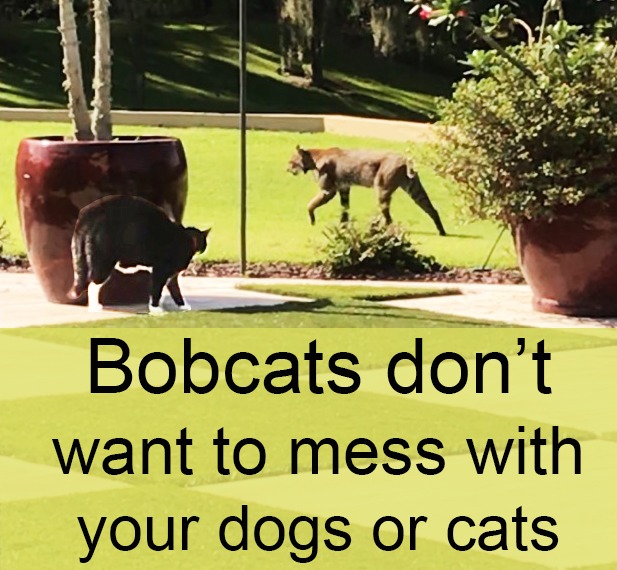
They are a great asset as they prey upon rats and help control disease by keeping the vermin population in check. Nature is perfectly balanced until man steps in and starts trying to eliminate key animals in the cycle of life.
Get a brochure you can print and share: Living with Bobcats
Check out these great suggestions for protecting your pets from predation: Protecting pets from bobcats and cougars.
https://youtu.be/-E3aKSPKlBA
See How Tigers are Helping Bobcats
https://youtu.be/1lkdM1jOPJI
Bobcat’s visit raises natural question
 Sherry Boas | Simply Living
Sherry Boas | Simply Living
November 4, 2007
I went outside to feed the birds today and saw a bobcat.
He (or she) was about 200 feet away, resting on the ground in front of the compost pile.
Compost piles are wildlife magnets. The odiferous porridge of kitchen wastes attracts mammals large and small. I’ve watched foxes and raccoons explore these bins of human detritus, but this was the first time a bobcat showed interest in the family dumping ground for avocado pits, eggshells, burnt rice and apple cores.
The bobcat, a tawny mass of cropped fur and pointy ears, looked comfortable. Like an oversized house cat who had just polished off a hearty meal, he rested contentedly on the matted grass. We eyed each other from afar. I squatted low, to appear less threatening. The cat simply stared in my direction, tufted ears at full attention, assessing the menace.
Reluctant to miss anything, but eager to immortalize this special moment, I rose slowly and slipped back into the house. Unfortunately, my camera wasn’t hanging on the hook next to the kitchen door as I assumed it would be.
Not wanting to waste precious time searching the house, I eased back outside. By then, the bobcat had risen, but remained in the same place.
The feral feline must have realized (correctly) that I was harmless, because he proceeded to stretch with a long, leisurely gee-I-wish-you-hadn’t-disturbed-me arch of the back. Standing my ground, I watched in awe.
Moments later, the object of my attention ambled off toward a more sheltered environ. There was nothing frantic or fearful about his movements. His graceful gait was slow and steady. I watched as he rounded the corner, disappearing from sight. Wanting more, I followed in his wake, moving as quietly as my bare feet would allow.
As I approached, I noticed the bobcat had paused beneath the overhanging branches of a nearby mulberry tree. The low-hanging limbs of the leafy fruit tree provided a tangled web that blended perfectly with his reddish-brown fur. When I rounded the corner, the cat caught sight of me. He responded by moving toward the woods. My eyes followed his trail for an instant before he vanished into the brambly undergrowth.
My one-on-one moment with nature was over. My only photographs were mental snapshots of the bobcat’s movements. I rushed back inside, eager to share my experience with Ralph and Toby.
Although this was the first time I’ve seen a bobcat by the compost pile, it was not my first sighting. On at least a half dozen occasions, I’ve chanced upon bobcats on the property. Each encounter has been spectacular, a cherished gift. But these experiences concern me, too. I’m not scared for myself or for the safety of others, but for the bobcats themselves. Every peek into the waning wilderness reminds me of what we have to lose.
So much untamed land has already been developed. What will happen to the bobcats, bears, deer, foxes and coyotes when people eliminate even more woods to make way for shopping centers, residential communities and industrial complexes?
The Florida panther is endangered. According to the University of Florida Institute of Food and Agricultural Sciences (UF/IFAS), only about 100 of these magnificent mammals remain in the wild. About a million bobcats roam throughout North America. In Florida, they are neither endangered nor threatened. But how long can that last?
Bobcats are solitary hunters. A male needs about 4,900 acres of field and forest in order to supply its carnivorous needs. A female needs 2,900 acres. That’s so much land. While these dog-size consumers of rats, mice, birds and rabbits can adapt to eating out of compost piles, foraging through trash cans and licking the remains of pet food bowls, it’s unlikely suburban residents will welcome their arrival to the neighborhood. Any nondomesticated creature that wanders into suburbia is more apt to arouse panic than peaceful observation and gratitude.
That’s not how I feel. I’m grateful for any chance to see a wild animal — large or small, on foot, wing or water.
I went out to feed the birds today and wound up feeding my own insatiable appetite for wildlife encounters. The few minutes the bobcat and I shared made an impression that will last for years. Will moments like this continue to happen? I don’t know, but I hope they will. I hope time is gentle to bobcats and the many other creatures whose fate relies heavily on the course of human actions.
Sherry Boas can be reached at simplyliving@beautifulbamboo.com.
In FL Nuisance Animals Are Killed, Not Relocated
Keep this in mind before you call someone and ask them to relocate a wild animal. It is against the law for a trapper to relocate a problem animal. They have to kill him or her by state law.
1/29/2009 The following is the Florida Wildlife Conservation Commission’s position on killing nuisance bobcats instead of relocating them or allowing them to be given sanctuary at Big Cat Rescue and other such sanctuaries.
“We sincerely appreciate and share your concerns for Florida’s wildlife, particularly in the recent incident in which a bobcat was euthanized after it was captured by a nuisance wildlife trapper in an Orlando community.
Nobody likes to see an animal killed like this, whether the reason makes sense biologically or for public safety, or not. In fact, allowing nuisance animals to be euthanized is something we would rather not do, and we consider that to be a last resort. This particular incident is very sad and unfortunate, but as is often the case, it may have resulted from inappropriate behavior by people.
The staff of the Florida Fish and Wildlife Conservation Commission is dedicated to wildlife conservation, which means protecting and managing wildlife species. So allowing an animal like this bobcat to be euthanized may seem counter to our agency’s mission. But, as unfortunate as it is, this bobcat was an example of an animal for which there was no good alternative other than euthanasia.
Many people have called our agency to ask why this bobcat couldn’t be taken to a zoo or other type of captive wildlife facility. The reason is that it’s difficult or impossible for many animals taken from the wild to adapt to living in a captive situation. As a result, most captive wildlife facilities are hesitant to take them because the animals become stressed, are subject to illness, fight with other animals and introduce disease into the facility.
People also asked why it couldn’t be relocated to the wild. There are many reasons for this, which are explained below, but the bottom line is that this animal had become too accustomed to being around people and no longer had much fear of them.
How this unnatural behavior happened is unknown, but the fact remains that it did. The bobcat was no longer acting like a wild bobcat. People in the community may have allowed it to eat pet food, or may even have set out food specifically for the bobcat. Or maybe nobody did anything to discourage it from hanging around. Maybe at first it was a novelty to see a bobcat up close, perhaps a good photo opportunity. So people tiptoed around the bobcat, and nobody tried to scare it away.
Or maybe the bobcat was sick; sick animals often exhibit unnatural behaviors and sometimes may lose their fear of people.
A wild animal that loses its fear and becomes comfortable around people, for whatever reason, is not a wild animal you want in your neighborhood. An animal like this becomes unpredictable and could easily injure someone. If it is sick and attacks someone the problems are even worse.
Moving an animal such as this bobcat provides an opportunity for it to become the same problem animal in a different neighborhood, or perhaps it could even spread disease to other wild animals in a new area.
Studies have shown that many relocated wild animals often try to return home – no matter how far away home is. Along the way an animal like this bobcat may find another neighborhood whose residents offer the same amenities – generally easy meals and few threats to its safety. The nuisance problems then start all over again in a new community.
Relocated animals cross unfamiliar roads and often get hit and injured or killed by vehicles. And, they end up in another bobcat’s established territory, alone and unfamiliar with the lay of the land. They often fall victim to fights that are frequently won by the resident animal.
The best solution to wild animals becoming nuisance animals is people – you and me – making sure that our actions don’t cause wild animals to change their behaviors. The key is in knowing how to live with them. Even in a state with seemingly runaway development, we can and often do co-exist with many wild animals. If people do the right things, then harm usually won’t come to either us or the animals.
If this is to work, it may require some people to modify their own behavior. How much you have to modify often depends upon where you live or how recently your neighborhood was built. It is often a real benefit to live right next to wetlands or woods, but if you do, you probably have lots of wildlife neighbors, some of which are looking for easy meals.
One of the surest ways to make a wild animal lose its fear of people and become a nuisance is to leave your pet’s food outside. For that matter, leaving any kind of food outside can attract wild critters. If we leave our garbage in an unsecured trash can, it can become a buffet for raccoons, bears, opossums and other wild animals. The seemingly innocuous birdfeeders can sometimes attract much more than birds. Even compost piles are heavenly to some wildlife. Unfortunately, in the end, all of these foods that humans provide unwittingly to wild critters can lead to the death of those wild critters who are so tempted by them.
We are all affected when the wild animals become used to people, then are branded nuisances and are sentenced to death. Nobody likes that, but often people can make small changes in their actions and prevent it from happening.
I hope this helps you understand some of the issues we face when humans and wildlife interact in these situations, as well as some of the solutions.
You may also find the enclosed document useful. It explains some of the Florida Fish and Wildlife Conservation Commission’s nuisance wildlife rules and provides a little more information about why it’s rarely a good idea to relocate wildlife.
Again, thank you for your heartfelt concern, and please know that we share many of your concerns.
Sincerely,
Sabrina Menendez
FWC Citizen Services”
Update 2010: Thanks to so many Big Cat Rescuers showing up to ask the FWC to protect the bobcat, they revised their ruling that all trapped bobcats must be killed to say that the bobcat must be released as close to the point of pick up as possible and that it must be on at least 40 acres, in the same county and there must be a signed approval for release by the owner of the property OR the bobcat has to be killed.
Why so many cougar attacks and cougar sightings?

Every day there is a story in a paper somewhere in the U.S. about cougar or mountain lion sightings in areas where the cats have not existed in the wild in over 100 years. Why is that? Could it possibly be that despite the fact that extinction rates are more than 1000 times greater than they should be due to the uncontrolled population growth of man and our extermination of everything in our path, the cougar is making a come back? That is what the fish and game departments across the country are claiming, but that is because they make their money from the issuance of permits to kill big cats. Hunters have wiped out the Jaguar for the most part and the cougar only exists in a few areas. Fish and game “experts” would have us believe that despite the fact that the big cats have been driven to extinction in most of their ranges around the world, that miraculously, the much-prized-trophy-cougar is alive and well and a public menace to boot.
Consider a much more likely scenario: The cougars who are being spotted in areas where they haven’t lived in up to 200 years, who are brazen enough to walk through subdivisions, and nap in trees above the family mini van, and who are living off eating dogs and cats and other domestic animals are the pets and captive born breeders turned loose due to the new law that makes it illegal to sell cougars across state lines. The Captive Wild Animal Safety Act was signed into law in Dec. 2003 by President Bush and immediately there was a flurry of cougar sightings. In every case the stories paint a portrait of a cougar nonchalantly strolling through a neighborhood. This is the behaviour of an animal born and raised around people, not a wild animal.
| They had a hard time explaining why one of them who was hit by a car turned out to be declawed. |
Delighted with the prospect of being able to sell permits to shoot the majestic cats the department of natural resources keeps assuring the public that these are wild cougars and that blasting them out of the trees is done in the name of public safety. They had a hard time explaining why one of them who was hit by a car turned out to be declawed.
Big Cat Rescue tracked the calls we received from people trying to get rid of unwanted big cats over the past decade:
Unwanted We Took Found We Offered We Took Big Cats These Homes To Take These For These 1999 55 13 * * 7 tigers, 2 cougars, 2 bobcats, 2 servals 2000 54 11 * * 7 tigers, 2 jungle cats + hybrids 2001 78 10 6 * 2 lions, 4 bobcats + hybrids 2002 74 4 0 * 2 tigers, 1 leopard, 1 bobcat 2003 312 8 4 * 2 jaguars, 1 leopard, 3 bobcats, + hybrids 2004 110 6 3 * 5 tigers, 1 lion 2005 94 9 2 * 6 tigers, 3 cougars; Ares, Artemis, Orion 2006 79 0 0 * none other than hybrids 2007 67 13 1 * 6 tigers, 2 lions, 5 rehab bobcats *who are not incl in list of abandoned cats 2008 85 3 0 22 2 tigers, 1 liger: Cookie, Alex, Freckles 2009 50 2 0 17 1 cougar, 1 serval; Sophia and Desiree 2010 89 9 1 53 3 cougars, Narla, Freddy, Sassy, 5 bobcats and a serval named Servie 1147 88 17
| …these cats are being turned loose to fend for themselves. |
Every year that number was growing dramatically, but in the year following the new law prohibiting the sale of big cats across state lines as pets, the number dropped by 1/3. The only other marginal drop was right after 9/11 and that coincided with a huge drop in discretionary spending.
It is a shame that these cats are being turned loose to fend for themselves. They don’t have the skills and some cases don’t even have the claws, to catch their own food. Those who are not shot will probably starve to death and in time we will start to see a drop in the number of sightings reported. The only good news is that this new federal law has been effective at curbing the number of cougars and lions that are being born for a life of misery and captivity.
People are still getting around the prohibition on big cats as pets by calling themselves educators or sanctuaries. Big Cat Rescue is working hard to close the loopholes in the laws that allow people to exploit big cats for profit. Please bookmark our page on Laws to keep up on the latest efforts to make the world a safer place for people and the exotic cats.
How do the wildlife agencies make it worse?
Nature has become purposely imbalanced by our wildlife agencies in order to insure that there are plenty of animals to be killed for fun and profit. Cougars prefer deer and rabbits to people, but our wildlife departments make money from selling permits to the 5% of our population that enjoying killing the cougar’s natural prey. This is often done in excess so that the cougars appear to be a public menace so that the state’s fish and game departments can then gain public support to sell the permits to kill the highly prized cougars.
Fact: Only 5% (12.5 million) of our population are hunters, yet they kill over 115
million animals each year for fun.
These are just the animals that licensed hunters report killing and do not include all the animals who are poached each year by those who believe that they are above the law. Even more despicable are the canned hunts where far too many exotic cats end up when they are discarded from zoos, circus acts and pet owners. Although it is illegal to kill most endangered species, the practice is common and for the right price and a guarantee of secrecy trophy hunters can kill a tiger or leopard while it sits in a cage. If this isn’t bad enough consider the fact that they don’t want to ruin the trophy and will therefore aim for areas that cause a slow and painful death.
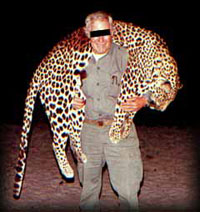 Wild cats do not purchase hunting licenses and most state wildlife managers draw their pay from revenue derived from the sale of hunting, fishing and trapping licenses. That, in brief, is what is wrong with wildlife management in America. In the US the decisions to protect or destroy, conserve or control, restore populations or reduce them are made by the interest of hunters. The 93% of Americans who do not hunt have been effectively excluded from the decision making process. Now that more caring people are trying to get involved, the state’s are fighting as never before to keep them out. Understanding the hunter’s hold on wildlife is the critical first step to loosening that grip.
Wild cats do not purchase hunting licenses and most state wildlife managers draw their pay from revenue derived from the sale of hunting, fishing and trapping licenses. That, in brief, is what is wrong with wildlife management in America. In the US the decisions to protect or destroy, conserve or control, restore populations or reduce them are made by the interest of hunters. The 93% of Americans who do not hunt have been effectively excluded from the decision making process. Now that more caring people are trying to get involved, the state’s are fighting as never before to keep them out. Understanding the hunter’s hold on wildlife is the critical first step to loosening that grip.
Hunting and fishing licenses are not simply issued by the state, but sold for a fee. Normally, these fees would be deposited in a state’s general treasury, and from there appropriated to whatever state programs the public, acting through their elected legislators, consider important. Instead, however, the conservation lobby persuaded state legislatures to dedicate hunting and fishing license fees to conservation programs. This means that license fees go directly to the state’s wildlife management agency, effectively insulating it from the legislature’s – and thereby the public’s – most effective means of oversight, the power of the purse. In a very real sense, state wildlife agency staff are not public servants, they are employees of the hunters and fishers whose license fees fund their programs and pay their salaries.
In 2006 12.5 million hunters spent $23 billion on their sport of which $642,069,054 went to wildlife agencies. 71 million wildlife watchers spent $45 billion in 2001, nearly twice as much as hunters, a fact generally ignored by state wildlife agencies when they tout the economic benefits of hunting. Since wildlife watchers do not have to purchase licenses or tags and they do not pay a tax on their equipment, the percentage of their $45 billion that went to wildlife agencies was exactly zero. Who do you think the wildlife agencies are working for?
In 2006 Thirty-one percent of the U.S. population 16 years old and older fed, observed, or photographed wildlife. These wildlife watchers increased in number by 8% from 2001 to 2006. Their expenditures for wildlife-watching equipment (binoculars, cameras, etc.) increased by 20% and for wildlife-watching trips by 40%.
The mass murder and manipulation of wild animals is just another business. Hunters are a tiny minority, and it’s crucial to them that the millions of people who don’t hunt not be awakened from their long sleep and become anti hunting. (Williams 1990) In 1995 the Humane Society of the United States, HSUS attempted to compile information about the structure of the wildlife commissions across the nation. Seventeen states refused to respond, indicating their disdain for animal lover’s involvement in THEIR business. The remaining states admitted that their boards are dominated by consumptive wildlife users. Several of these are people who own canned hunting operations. Most important is to note, that by their own admission, none of their commission members are opposed to hunting. Consider now the fact that another poll of the public, taken the same year, showed that 93% do not hunt and that most Americans are opposed to the brutal practice. Clearly these governing boards are not representing the majority of the people in their wildlife management policies.
The myth that we have been expected to buy into says; “We have to kill animals so that they don’t over populate and starve to death.” The fact is that habitat is managed for maximum deer and duck numbers; wildlife is trapped and transplanted to the killing fields; fires are set; trees are planted or mown down; fields are flooded and fields are drained all to maximize the numbers of animals available to hunters for the joy of killing. Natural predators, such as Cougars, Bobcats, Lynx, Wolves and Coyotes are killed by the thousands so that they don’t compete with the hunters.
The predominance of Aldo Leopold’s philosophy in wildlife management assures that our incredible war on wildlife can continue indefinitely. It is, in fact, the only war in history conducted by rules that were deliberately designed to keep it from ending. The conservation philosophy was created to guarantee that animals will continue to suffer and die at the hands of hunters forever. It is a philosophy of animal abuse in perpetuity.
Florida spends more on wildlife law enforcement than it does on wildlife and fisheries management combined. This is typical of most states. We expect to pay our officers to protect the unbridled exploitation of our state’s wildlife, but the bulk of the budget is spent to ensure that the licensed hunters and anglers are obeying the law regarding size, weight and number of kills. These expenditures would be virtually un necessary if there were no hunting. This fact undermines the assertion made by the hunting industry that it pays for wildlife and parks. At the very best, hunters pay to produce lots of animals that they want to kill and pay to enforce regulations to keep each other from killing too many of them or in an illegal
manner.
The numbers killed are staggering. These figures all came from reported kills, in just one recent year, by licensed hunters and do not include
animals that were killed illegally: 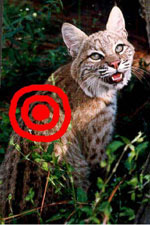
Bears 25,729
Bobcats 40,008
Cougar 2,109
Coyote 491,298
Deer 6,189,116
Ducks 10,119,700
Fox 367,527
Otter 18,896
Rabbits 11,492,357
As people become more enlightened fewer and fewer people each year are taking up hunting as a sport. To change this trend, the hunters and the state’s wildlife agencies are promoting hunting to children. Faced with declining numbers of hunters and an increasing population of non consumptive wildlife users, the states are circling the wagons to protect hunting. Instead of seriously seeking alternative sources of funding, ways to include the non hunting public, and management that emphasizes non hunted species, they are trying to increase hunter numbers so that they don’t have to change the status quo. Your tax dollars are paying for promotional campaigns to urge children as young as 6 to get involved in trapping and killing animals because it has been discovered that if a child is not exposed to this sort of violence during their formative years, they will be very unlikely to be able to stomach the thought of killing for pleasure as an adult. Animal abuse is directly linked to human abuse and murder.
For more details read: Teach Our Children.
Five percent of the U.S. population 16 years old and older, 12.5 million people, hunted in 2006. The number of all hunters declined by 4% from 2001 to 2006. Wildlife agencies are now targeting children as young as 10 and women as the hunters of the future by portraying the killing of animals as a way to feel empowered in their world. See USFWS 2006 report.
What can we do to stop the violence?
The answer lies in becoming active  and speaking out. Most of us feel the same way, but we aren’t being heard, because we are standing idly by waiting for someone else to do the right thing. Most wildlife commissioners are appointed by the governor.
and speaking out. Most of us feel the same way, but we aren’t being heard, because we are standing idly by waiting for someone else to do the right thing. Most wildlife commissioners are appointed by the governor.
Use your state’s freedom of information act to find out how members are appointed to your board and what their position really is on wildlife protection. Make sure that plenty of non hunters attend each meeting of your wildlife commission. Make sure that they attend to important issues like hound hunting, baiting, long trap check intervals, hunting contests, children recruitment policies and how animals are identified as being so unworthy of protection that there is unlimited, open season on their killing.
Speak out calmly and professionally. To act irrational and thus label all people who care as being unstable won’t help the animals. Ask the commission to schedule votes on these issues and to go on the record about their support of them. Get the press involved to cover the meetings and the failure of the commission to act in favour of reasonable wildlife protection measures. The media wants to print articles that will be favourable to the masses and the masses have said that they are not in favour of hunting.
Work to change the composition of the commission to include members who are not hunters. Lobby the governor’s office to appoint qualified candidates who represent the majority of the people in your state. If these candidates are continually passed over in favour of less
qualified hunters, then let the media know about it. Work with your state legislator so see if perhaps a ballot initiative might be implemented to restructure the commission. 
Lobby members of the appropriate committees in your state legislature to earmark general funds for the support of the wildlife department. With enough funding we can demand that our concerns be seriously addressed by the commission and the department.
If you don’t know who your representatives are, you can find them on line by clicking on the lion at the left.
115 million animals are counting on YOU to speak out for them this year.



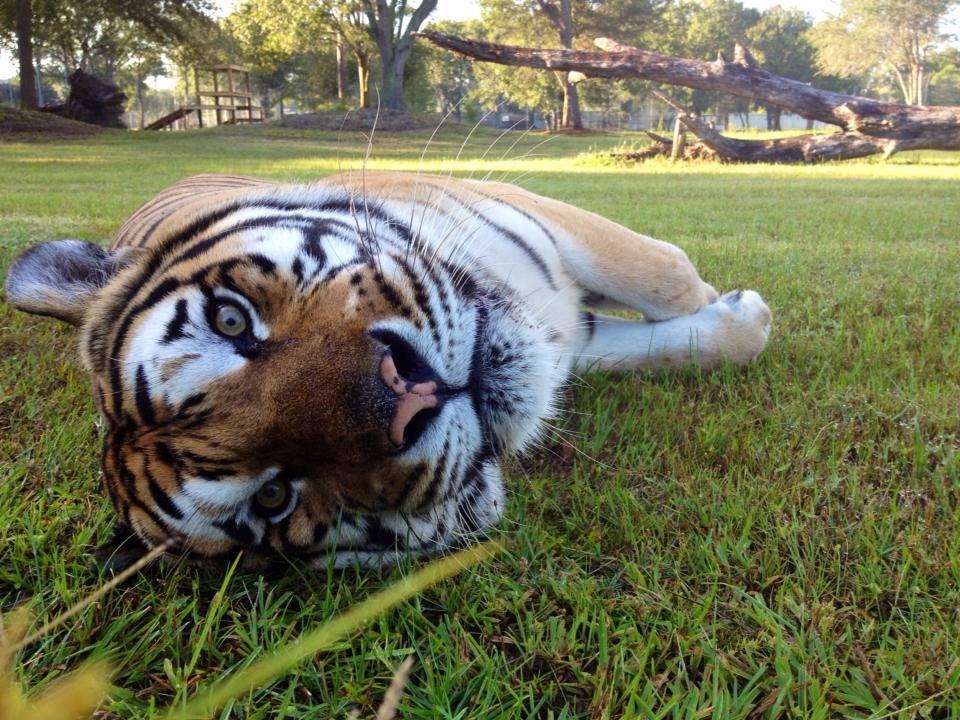
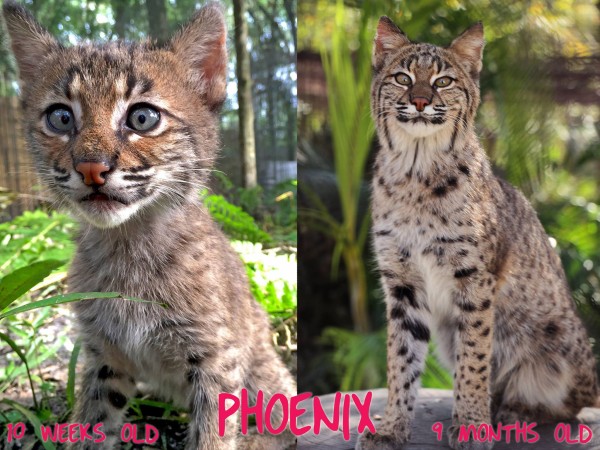

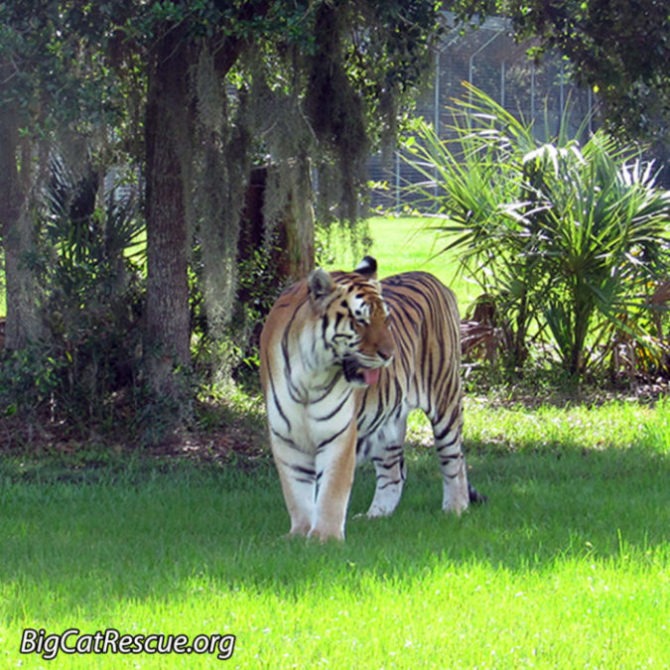
Big Cat Resuce. Can you help P22? I do not trust California Department of Fish and Wildlife or organizations like that to make a non-political decision. I don’t trust some out there to make decisions about him. They are already saying he killed a chihuahua. I understand having to make the tough decisions. I had to put three cats to sleep over the years because of age and illness. Just want everybody to do what is best for P22.
We have to trust the veterinarians attending him to make the most humane decision. Unfortunately many wild born adult animals don’t adjust well to captivity even in a sanctuary setting. California Fish and Game is the ultimate authority in deciding placement if it comes to that.
And where is the location? Thank you.
Are you guys open? If so how much it is?
Thanks for pointing out that wild felines tend to hunt alone and not in packs. I’m thinking about hiring animal removal services soon because my outdoor CCTV camera saw a wildcat roaming outside my property. I’m not sure about its actual species but I’m sure that it might be dangerous to live near one.
Great information. It’s saddening to know how ignorant and selfish hunters are. I feel passionate about the preservation of such majestic and powerful creatures as big cats. I want to be a part of the team that fights for their survival. I hope to do some volunteer work learning more about these animals and how to handle them while respecting their necessary lifestyle. Consider this my application to join your operation. I have a years worth of experience handling the big dogs section at the humane society, and am well equipped mentally and physically, to become a worthy contributor to the safety and preservation of wild cats. I will certainly be in contact ASAP, so expect to hear from me soon. Happy New Year, and look forward to making an appearance.